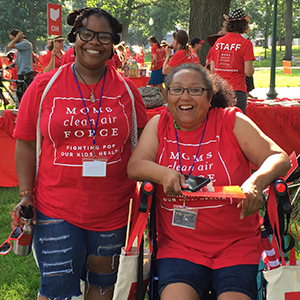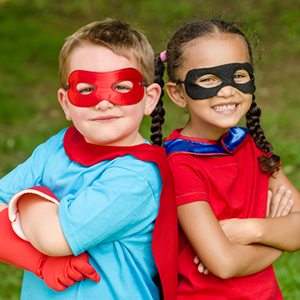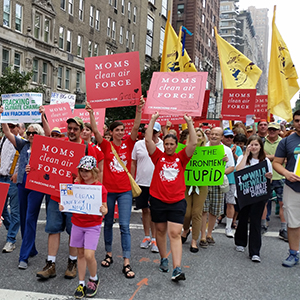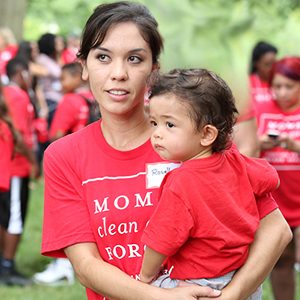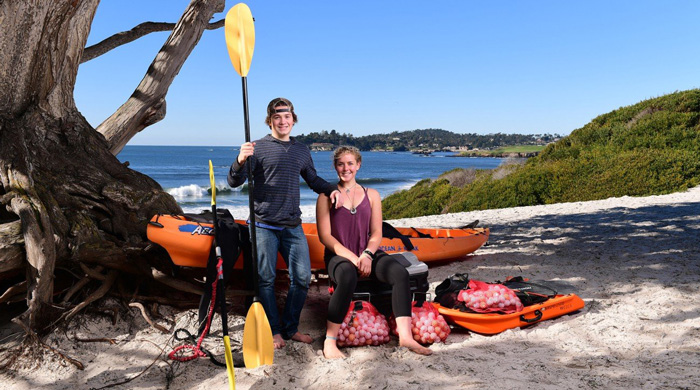
Are America’s students our best hope for helping us finally solve the pollution problems we’ve created?
In the wake of the passionate March for Our Lives that happened in Washington, D.C. and almost 800 other cities around the world, we stand with the students fighting to make their world safe from gun violence. Students are also stepping up to help solve environmental problems, especially when it comes to climate change and plastic pollution. We’ve already seen young people use the legal system to stop climate change by filing suit against President Trump, EPA Administrator Scott Pruitt, and Energy Secretary Rick Perry for rolling back bedrock climate protections like the Clean Air Act.
Now they’re formng their own organizations to make change happen. Among those making a big difference are Delaney Reynolds, Maya Burhanpurkar, and Alex Weber and Jack Johnston. All have received the 2018 Gloria Barron Prize for Young Heroes, along with $5,000, in recognition of their inspiring, public-spirited efforts to protect people and the planet.
Florida Sea-Level Rise
Florida teenager Delaney Reynolds founded The Sink or Swim Project to educate young people and adults about global warming and sea level rise. A resident of Miami, where sea level rise is already evident, the 17-year old turned data from NASA and NOAA into PowerPoint presentations that she delivered to over 10,000 children, senior citizens, and policy makers. National Geographic recorded one of her presentations for the Years of Living Dangerously TV show. She’s also written three children’s books, along with a comic adventure book about climate change titled “Where Did All the Polar Bears Go?” When Delaney learned Miami-Dade County officials mentioned sea level rise just once in a 1,000-page, three-volume budget and didn’t include any funding to address the issue, she spoke before the Mayor and County Commission to demand action. Her work, along with that of other concerned citizens, led the Commission to allocate $300,000 and to appoint Miami-Dade County’s first-ever Chief Sustainability Officer.
“Kids get it,” she says. “Here in South Florida, we see evidence of sea level rise all around us and we understand that our generation must solve this problem. I’m proud to play a small role in helping lead my generation toward the solutions our planet needs.”
Climate Change in the Arctic
Maya Burhanpurkar, age 18, created “400 PPM,” a documentary film that tells the story of her expedition to the Arctic, where she witnessed climate change firsthand. The Ontario, Canada citizen titled her film for the 2013 atmospheric measurement of carbon dioxide that reached 400 parts per million (ppm), the highest levels in more than 2.5 million years. Her film focuses on the Arctic’s Inuit people, whose lives have been upended by a warming climate and melting ice. She produced her film through STAMx Youth Inc., a non-profit she founded to use Science, Technology, Arts, and Math to empower young people to take action against climate change.
Maya’s climate change passion began when, at age 14, she joined scientists and other students on a research expedition to the Arctic. Returning home she was struck by how little her peers knew or cared about climate change. That’s when Maya decided to produce her documentary. She convinced Canadian dignitaries, including novelist and activist Margaret Atwood, to be a part of her film. Nearly two years later, “400 PPM” was released as a non-profit, open-source documentary film. It has been shown around the world and is projected to reach an audience of over 2.2 million students.
“There were many late nights when I contemplated giving up on my project and getting a good night’s sleep,” says Maya. “I’m so glad I didn’t.”
Plastic Pollution and Golf Balls
Pals Alex Weber and Jack Johnston, both 17, co-founded The Plastic Pick-Up, a non-profit committed to keeping plastics pollution – especially golf balls – out of the ocean.
In 2016 alone, their Fore the Ocean program removed over 21,000 golf balls in the past year, equivalent in weight to 147,000 plastic grocery bags, from the seafloor below California’s Pebble Beach Golf Course. They’re partnering with The Pebble Beach Company, The Monterey Bay Aquarium, and The Monterey Bay National Marine Sanctuary to implement monthly underwater golf ball clean-ups and weekly beach clean-ups. Their long-term goal is to create policy that will regulate and enforce the environmental impact of golf courses along our coasts and watersheds.
The two began their work after discovering thousands of golf balls while free diving in the Carmel Bay near their home. They learned that after a ball’s outer plastic layer breaks down, its rubber band core unravels into what looks like dried seagrass. The rubber bands may be mistakenly eaten by birds and sea life. Golf balls with a solid core contain zinc acrylate, which is known to be highly toxic to aquatic organisms. Alarmed by what they learned, Alex and Jack became committed to educating others about the problem of ocean plastic pollution.
“When we talk to local kids, we tell them to speak up and be heard because adults care about what we think,” says Alex.
We care. We hear you. We know you’re the leaders of our future and will be voting. And that gives Moms hope for the future!
Photo: The Plastic Pick-Up
TELL CONGRESS: I DISAPPROVE OF EPA’S AGENDA TO MAKE AMERICA DIRTY AGAIN
